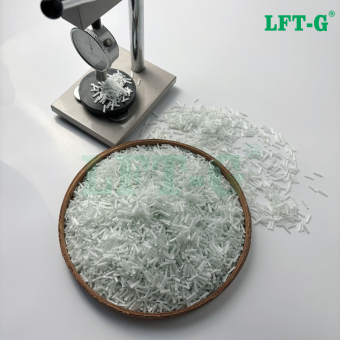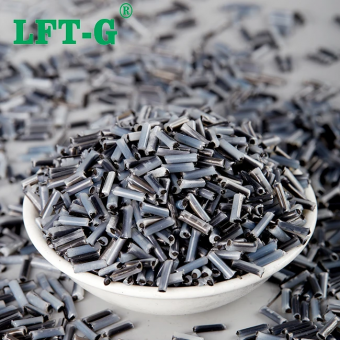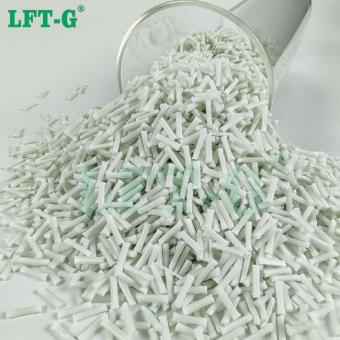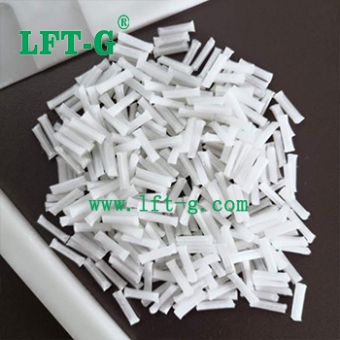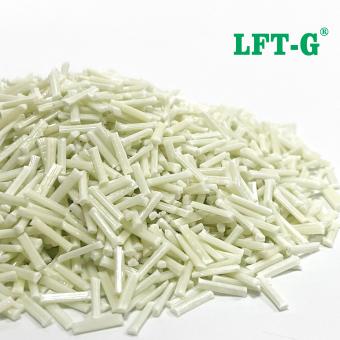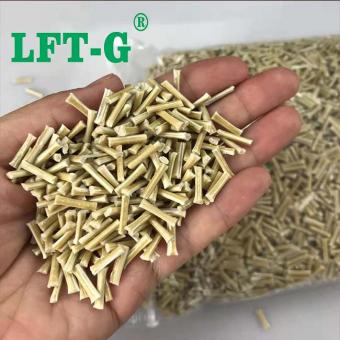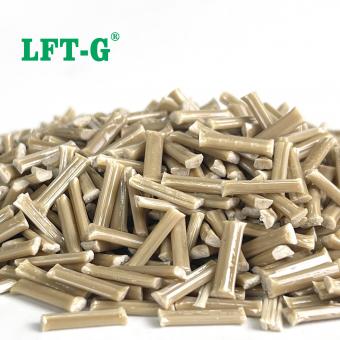-
LFT PPS гранулы термопластичного композита с длинным стекловолокномPPS длинные армированные стекловолокном термопластические гранулы для введения и свойств
- стекловолокно pps термопластический материал
- pps формование волокна
- pps lgf стекловолокно
- натуральный цвет pps lgf составной
- PPS гранулы из полимерного стекловолокна
- термопластичные первичные гранулы PPS
Теги :
-
LFT высокопроизводительный модифицированный PPS, заполняющий длинное стекловолокно, образец доступен натуральный белый 12 ммPolyphenylene sulfide PPS is one of the typical representatives of special engineering plastics, with a linear structure of alternating benzene rings and sulfur atoms. In the condensed structure, PPS is easy to crystallize, crystallinity of nearly 70%, therefore, has good thermal stability, chemical stability and dimensional stability, etc. PPS mainly has the following five performance advantages. (1) excellent heat resistance. pps melting point of more than 280 ℃, heat deflection temperature of more than 260 ℃, and after high-temperature heat aging treatment, the strength retention rate is high. (2) since the flame retardant. PPS itself has flame retardant, without adding flame retardants flame retardant level can reach UL94 V- 0 level. (3) good mechanical properties. PPS is a brittle material, has good creep resistance, high surface hardness, good wear resistance, and carbon fiber and other materials compound, but also shows good self-lubricating properties. (4) excellent chemical resistance, irradiation resistance. pps below 200 ℃ almost insoluble in any solvent, can withstand almost all inorganic substances, radiation dose up to 108Gy. (5) good processing properties. pps melt viscosity is low, as the resin matrix of composite materials, for the reinforcement of the flow of excellent wetting effect. As PPS has the above performance advantages, and compared to other high-performance thermoplastic resins and easy processing, low cost, so become an excellent resin matrix for the manufacture of composite materials. Long glass fiber Glass fiber is an inorganic non-metallic material with excellent performance, is a natural mineral with silica as the main raw material, add specific metal oxide mineral raw materials, mixed evenly, molten at high temperature, molten glass liquid flow through the funnel outflow, in the role of high-speed pull gravitational force is drawn and rapidly cooled and cured into a very fine continuous fiber. Glass fiber monofilament diameter from a few microns to more than twenty microns, equivalent to a hair of 1/20-1/5, each bundle of fiber original filament are composed of hundreds or even thousands of monofilaments. Glass fiber basic properties: The appearance of a smooth cylindrical surface, the cross-section is a complete circle, round cross-section to withstand the load capacity; gas and liquid through the resistance is small, but the surface is smooth so that the holding force of the fiber is small, not conducive to the combination with the resin; density is generally in 2.50-2.70 g/cm3, depending mainly on the glass composition; tensile strength than other natural fibers, synthetic fibers to be high; brittle materials, the elongation at break is very small ; water resistance and acid resistance is good, while alkali resistance is poor. It can be divided into continuous glass fiber, short glass fiber (SGF) and long glass fiber (LGF) by length classification. Long glass fiber is the most widely used glass fiber at present. And Xiamen LFT plastic composite company is focuses on the produce of long glass fiber compounds for many years. SGF VS LGF 1. Разница в длине инженерных материалов длинного стекловолокна и короткого стекловолокна буквально означает разницу в длине; более распространенный размер короткого стекловолокна составляет около 0,2–0,6 мм между ними; размер длинного стекловолокна составляет около 6-25 мм между ними. 2. Различия в силе производительности Различные длины стекловолокна отличаются по своей прочности, длина волокна длинных стекловолокон в композиционном материале внутри ударной вязкости, чем короткие стекловолокна сильнее. 3. Производственный процесс отличается Производство длинного стекловолокна, высокие требования к сырью, особенно производственный процесс требует активации поверхности стекловолокна, обработка не может быть залита стекловолокном, а также происходит явление внешней утечки. Производство короткого стекловолокна, потому что к размеру, как правило, нет особых требований, поэтому производство относительно простое, требования к сырью не так высоки, производственные затраты для производителей низкие. 4.
- полифенилент ППС
- pps lgf40 гранулы сырья
- гранулы pps lgf, армированные стекловолокном
- pps первичные гранулы, армированные термопластом
- пластиковые гранулы из стекловолокна pps lgf40
Теги :
-
LFT PPS термопластичные композитные гранулы, армированные длинным стекловолокномPPS термопластичные гранулы, армированные длинным стекловолокном, для введения и свойств.
- PPS-волокно для литья под давлением Полифениленсульфид
- pps lgf стекловолоконные автомобильные детали рама
Теги :
-
LFT PPS термопластичные композитные гранулы, армированные длинным стекловолокномPPS термопластичные гранулы, армированные длинным стекловолокном, для введения и свойств.смотреть больше

 Эл. почта
Эл. почта русский
русский English
English français
français Deutsch
Deutsch italiano
italiano español
español português
português العربية
العربية 日本語
日本語 한국의
한국의 中文
中文




